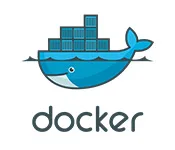Trying to create a dynamoDB table via terraform within a Localstack environment running in a docker container. I have the following terraform file:
provider "aws" {
region = "us-east-1" # Change to your desired region
access_key = "test" # Access key for LocalStack
secret_key = "test" # Secret key for LocalStack
skip_credentials_validation = true
skip_requesting_account_id = true
endpoints {
dynamodb = "https://localhost:4566" # LocalStack DynamoDB endpoint
}
}
resource "aws_dynamodb_table" "users_table" {
name = "UserProfileTable"
#billing_mode = "PROVISIONED" # Or use "PAY_PER_REQUEST" for on-demand capacity
read_capacity = 5
write_capacity = 5
hash_key = "UserID"
range_key = "PostID"
attribute {
name = "UserID"
type = "N"
}
attribute {
name = "PostID"
type = "N"
}
tags = {
Name = "dynamodb-table-1"
Environment = "production"
}
}
I run the localstack start -d and confirm the container is running. I navigate to the directory where the main.tf file sits. I run terraform init and then terraform apply. I get the following response:
Terraform used the selected providers to generate the following execution plan. Resource actions are indicated with the following symbols:
+ create
Terraform will perform the following actions:
# aws_dynamodb_table.users_table will be created
+ resource "aws_dynamodb_table" "users_table" {
+ arn = (known after apply)
+ billing_mode = "PROVISIONED"
+ hash_key = "UserID"
+ id = (known after apply)
+ name = "UserProfileTable"
+ range_key = "PostID"
+ read_capacity = 5
+ stream_arn = (known after apply)
+ stream_label = (known after apply)
+ stream_view_type = (known after apply)
+ tags = {
+ "Environment" = "production"
+ "Name" = "dynamodb-table-1"
}
+ tags_all = {
+ "Environment" = "production"
+ "Name" = "dynamodb-table-1"
}
+ write_capacity = 5
+ attribute {
+ name = "PostID"
+ type = "N"
}
+ attribute {
+ name = "UserID"
+ type = "N"
}
}
Plan: 1 to add, 0 to change, 0 to destroy.
╷
│ Warning: AWS account ID not found for provider
│
│ with provider["registry.terraform.io/hashicorp/aws"],
│ on dynamoDB-definition.tf line 1, in provider "aws":
│ 1: provider "aws" {
│
│ See https://registry.terraform.io/providers/hashicorp/aws/latest/docs#skip_requesting_account_id for implications.
╵
Do you want to perform these actions?
Terraform will perform the actions described above.
Only 'yes' will be accepted to approve.
I type ‘yes’ and then get stuck on aws_dynamodb_table.users_table: Still creating... forever.
I saw in this stack question that they needed to like initialize the dynamoDB services. I don’t know how to do this, and the internet suggests this isn’t necessary. Why isn’t the table ever created?
I have included the version of the various components below. Not sure if relevant.
Localstack --version: 3.1.0
awslocal --version: aws-cli/1.32.31 Python/3.11.0 Darwin/23.2.0 botocore/1.34.31
terraform --version: Terraform v1.7.2 on darwin_arm64 + provider registry.terraform.io/hashicorp/aws v5.34.0

 Question posted in
Question posted in 

2
Answers
Try using AWS provided image DynamoDB Local!
Here is steps to make Terraform run successfully:
Create Docker Compose file
docker-compose.yml:Change endpoint configuration in
.tffile:Run in terminal:
Ignore
AWS account ID not found for providerwarning and typeyes.Now you should see:
The only change needed in your Terraform configuration was this:
You can analyze the LocalStack logs to see your DynamoDB table being created:
LocalStack uses DynamoDB Local under the hood, and on top of it LocalStack has support for global tables, multi-accounts and multi-region namespacing, integration with Kinesis and DynamoDB Streams, as well as persistence.